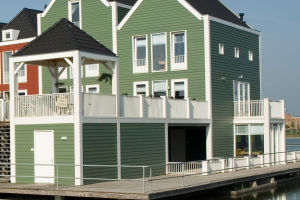The top ten deserts in the world are the Sahara Desert, Arabian Desert, Libyan Desert, Australian Desert, Gobi Desert, Patagonian Desert, Rubhari Desert, Kalahari Desert, Great Sand Desert, and Taklamakan Desert. Here, we'll introduce three well-known deserts for you.
1. Sahara Desert
The Sahara Desert formed about two and a half million years ago and is the second-largest desert in the world (after Antarctica) and the largest sandy desert in the world. It is located in northern Africa, and the region's climate conditions are so harsh that it is one of the most unsuitable places on earth for living creatures. Its total area is about the size of the entire continental United States.
The word "Sahara" is a transliteration of the Arabic word for "Great Desert," which is derived from the language of the local nomadic Tuareg people.
The Sahara Desert stretches across the northern part of the African continent, measuring 5,600 kilometers from east to west and 1,600 kilometers from north to south, covering a total area of 9,065,000 square kilometers and about 32 percent of Africa's total land area.
The Sahara Desert is the world's most sunny desert. The climatic conditions are extremely harsh, and it is one of the most inhospitable places for living creatures to grow. The soils of the Sahara Desert are low in organic matter and often devoid of biological activity, although nitrogen-fixing bacteria are present in some areas. The soils of the depressions are often saline.
Soils on the edge of the desert contain a higher concentration of organic matter. The Sahara is sparsely populated, with an average of less than one person per square kilometer. The population is predominantly Arab, followed by Berbers and others. The population and agricultural production are mainly located in the Nile Valley and oases, partly nomadic.
2. Arabian Desert
Stretching across an expansive area of 2.33 million square kilometers, the Arabian Desert claims the title of being the second-largest desert globally. Situated to the east of Egypt, it borders the Nile Valley, the Suez Canal, and the Red Sea, and is commonly referred to as the Eastern Desert.
The region boasts the Ma'aza Plateau at its core, while its eastern side is adorned with solitary mountains like Mount Shaib Banat, Mount Sibay, and Mount Umnakat. Towards the south, it merges with the Nubian Desert in Sudan.
Predominantly characterized by gravel desert terrain, the Arabian Desert showcases elevations ranging from 300 to 1,000 meters, along with stark, rocky hills. It is intersected by intermittent rivers such as Tarfa and Hudayin, flowing in an east-west direction, as well as their tributaries, while the seasonal river Kinah runs north-south.
3. Libyan Desert
The Libyan Desert is located in the northeastern Sahara Desert, covering central and western Egypt and eastern Libya. It is a plateau that slopes from south to north, with an elevation of 350-500 meters in the south, 100-250 meters in the middle and north, and the highest point in the southwest reaching 1800 meters above sea level.
It has many rocky plateaus and sandy plains. And the climate is dry and uninhabitable. The highest point is Mount Ouweinat, situated at the junction of three countries. The Qattara Depression in Egypt is the lowest point, 133 meters below sea level.
There are few inhabitants, concentrated in the Egyptian oases of Siwa, al-Bahriyah, al-Farafirah, ad-Dakhilah, al-Kharijah, and the Libyan oasis of Kufrah. The Egyptian part of the Libyan desert is called the Western Desert, which refers far more generally to the area west of Egypt.


